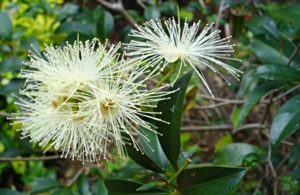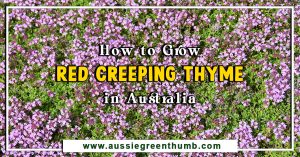Grevillea preissii ‘Seaspray’ is the perfect native ground cover plant for Aussie gardens. This hardy, compact Grevillea is drought tolerant and simple to grow. It is also a good option for coastal gardens.
This shrub produces beautiful bright red flowers that bloom for long periods during winter and spring. This showy and stunning flower display will attract lots of native wildlife and beneficial insects to your garden.
Low-spreading and suitable to many different kinds of landscapes, the Grevillea ‘Seaspray’ is an abundant grower that needs relatively little to establish itself and thrive.
This gardening guide includes everything you need to know to successfully grow Grevillea ‘Seaspray’.
More...
Grevillea ‘Seaspray’ Features
Genus: Grevillea
Species: G. preissii
Cultivar: ‘Seaspray’
Family: Proteaceae
Flower Colour: Red
Foliage Colour: Grey
Growth Habit: Shrub to 1m
Flowering: Autumn to Spring
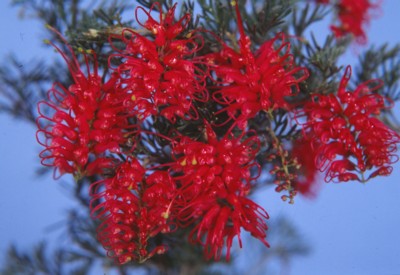
Grevillea preissii ‘Seaspray’ is a quick-growing, compact, evergreen shrub that grows to a height of 0.5-1m and can spread 1-2m in width. The plant is sometimes also known as Spider Net Grevillea.
Grevillea preissii ‘Seaspray’ is best suited to areas of Australia with dry temperate climates. This perennial evergreen shrub does especially well in areas of the country with long, dry summers. Although it can tolerate some humidity, like in areas of the lower east coast, it is not recommended for subtropical and tropical climates.
The shrub has soft greyish green foliage that contrasts beautifully when planted near other plants with brighter green foliage.
This stunning grevillea produces blooms of small, beautiful, lipstick red flowers that occur in clusters at the end of branches or in the leaf axils.
Once established Grevillea ‘Seaspray’ are heat and drought hardy plants. These hardy native plants can also withstand light frost and coastal conditions.
Other common names for the Grevillea preissii include:
- Spider Net Grevillea
- Grevillea Gilt Dragon
When Does Grevillea ‘Seaspray’ Flower?
Grevillea ‘Seaspray’ will flower for an extended period during winter and spring. It produces small attractive spidery red flowers that are full of nectar. The flowers will attract native wildlife and beneficial insects to your garden.
The Gilt Dragon raspberry red spidery flowers look fantastic and really pop against the plants contrasting grey foliage.
How to Grow Grevillea ‘Seaspray’
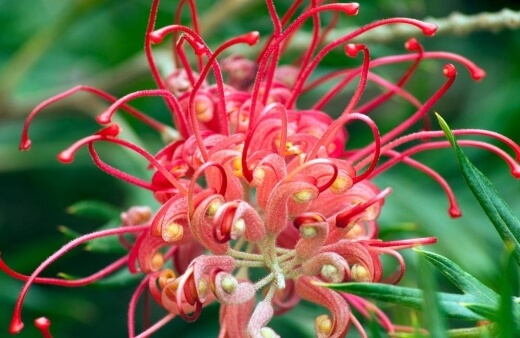
The Best Soil for Grevillea ‘Seaspray’
Grevillea ‘Seaspray’ can grow well in most soil types and being natives are used to low nutrient Australian soils. The soil should be well-drained and a light, loose sandy soil is ideal.
No additional compost or fertiliser is normally required for this plant to thrive. If needed, a slow release native fertiliser can be added to the soil on an annual basis.
Where to Position Grevillea ‘Seaspray’ in Your Garden
Grevillea ‘Seaspray’ should be planted in a spot of the garden where it will get full sun. This native shrub will also tolerate being planted in a semi-shaded position. Avoid damp areas of the garden in deep shade.
Grevillea preissii is a spreading, low groundcover shrub that can bring lots of colour and texture to the garden. It is also sometimes used as a low flowering hedge.
They will tolerate rocky soils making them a flexible option for many gardeners. Their tolerance for salty air and low profile also makes the plant a popular choice for coastal gardens.
Propagating Grevillea ‘Seaspray’
Grevilleas can be propagated by seed or by semi-hardwood cutting. Although, propagating by seed is often the easiest and cheapest option as they’re readily available from the fruits which form after flowering.
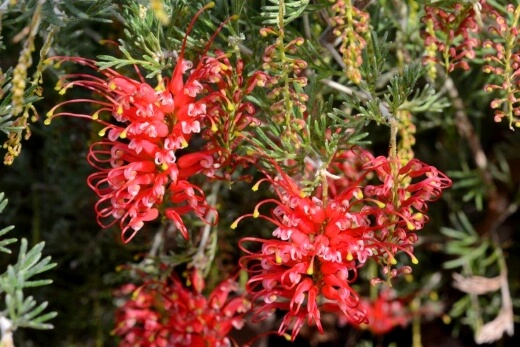
Source: bgpa.wa.gov.au
Propagating Grevillea preissii from Seeds
Seeds are best sown during spring and summer as they don’t often germinate when the conditions are too cold. Ideal temperatures for germination are between 18°C and 22°C. Seeds do require some pre-treatment to guarantee success.
- Before sowing, gently knick the seeds with a knife or sharp blade. This will help encourage germination.
- Soak seeds in warm water overnight; this will soften the outer layer and further increase the chance of germination.
- Once soaked, prepare a seedling tray or small pot with a rich seeding mixture.
- Place the seed on the surface of the soil and cover lightly with some soil.
- Water well right after sowing. Then, keep the soil consistently moist and warm to encourage germination.
- Germination will occur between 21 to 60 days.
As with other native species, sometimes seeds can be stubborn and wait for the ideal time to germinate. As such, it’s best to be patient with seeds should you not see results.
Grevillea ‘Seaspray’ Propagation from Cuttings
Cutting can be slow to strike, but once they do, they tend to establish themselves pretty quickly. Cuttings should only be taken from healthy, thriving plants. Always carefully inspect cutting for signs of disease, pests or damage.
- Remove a semi-hardwood cutting around 8 to 10 centimetres in length.
- Prepare a small container or pot with a porous potting mixture.
- For optimal results, dip the end of your cutting into a rooting hormone which will promote root growth.
- Plant the cutting directly into the soil. Keep the soil moist, and you're cutting in a sunny spot.
- Replant into a larger or into the ground once you can see new growth appear.
Planting Grevillea preissii ‘Seaspray’
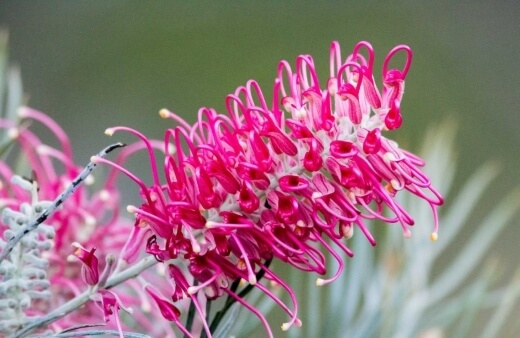
Once your Grevillea is ready to be planted, it’s time to pick your spot and prepare it. Although these plants aren’t overly picky, it’s always a good idea to mix in some organic matter into extremely poor soils.
In areas with poorly draining soils, mixing in some coarse organic material can help to improve drainage.
To plant, here is what you’ll need to do:
- Find a sunny spot and dig a hole twice the size of the rootball. While not necessary, a granular, slow-release fertiliser can be dug into the soil.
- Remove the plant from its original pot and gently shake to loosen any of the leftover potting soil.
- Place the root ball into the hole and backfill with the rest of the soil.
- Press down the soil, which will help to stabilise the trunk and keep your plant in place.
In areas that experience a lot of wind, it may be necessary to stake younger plants until the roots have established themselves. Keep plants well-watered right after planting.
Grevillea ‘Seaspray’ Care Tips
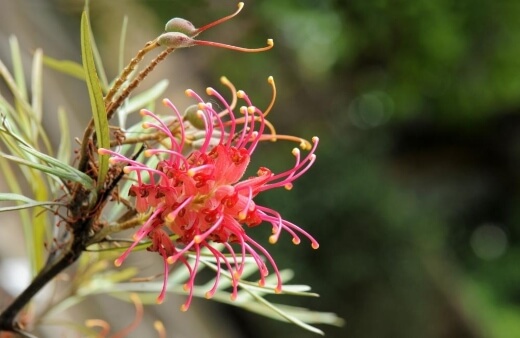
Grevilleas are known to be some of the toughest endemic plants, which means they have a relatively fuss-free maintenance routine. They’re salt-tolerant, drought-tolerant and won’t need much pruning or fertilising.
In the first few months of growth, while plants are establishing themselves, they will require more water than usual. During this period, you can water them as much as once per week.
It’s important to note that Grevillea ‘Seaspray’ doesn’t like wet feet, so avoid watering if the soil is already wet. Allow the soil to dry out completely in between watering. In rainy or cold weather, avoid supplementary watering altogether.
No additional compost or fertiliser needs to be added. However, if your plants are looking drab or lacking growth, a slow-release, annual fertiliser can be added annually to support your plants. Be sure to pick a native fertiliser or a seaweed fertiliser for the best results.
See our Australian garden fertilisers guide so you can pick the right fertilisers for your plants.
Pruning Grevillea ‘Seaspray ’
While pruning isn’t often needed with grevilleas, it can be done to maintain the size and shape of your plants. Pruning should be done after flowering for the best results.
Delay pruning, however, if you’re hoping to grab yourself some seeds. Fruits only develop shortly after flowering. Be sure to sterilise garden shears before and after pruning to avoid your plants coming in contact with diseases.
If growing your Grevillea for smaller ground cover, more regular pruning may be required to control growth. (Get the best pruning shears for the job.)
Common Grevillea ‘Seaspray’ Pest and Diseases
Typically grevilleas don’t have any issues. They’re not particularly susceptible to pests and are relatively resistant to the same issues other garden plants may develop.
The most common issue growers may experience is due to overwatering. Leaving your Grevillea with wet feet will quickly lead to a root rot issue. Unless this issue is tackled quickly, by cutting back on watering or replanting, it can lead to the death of your plant.
Keep a careful eye on your soil, and always wait until the soil dries out before watering again.
Another challenge that these plants pose is that they’re at risk of becoming infected with ‘dieback’ (a soil-borne disease caused by the organism Phytophthora cinnamomi). Do your best to protect your plants from dieback obtaining plants and seeds from registered native nurseries and avoiding taking cuttings from wild-growing plants.
Should you have any plants in your garden which have been infected by dieback, remove them immediately taking care not to touch any other plants in your garden thereafter. These infected plants need to be destroyed by means of fire immediately to prevent further spread.
Grevillea ‘Seaspray’ Landscaping Ideas
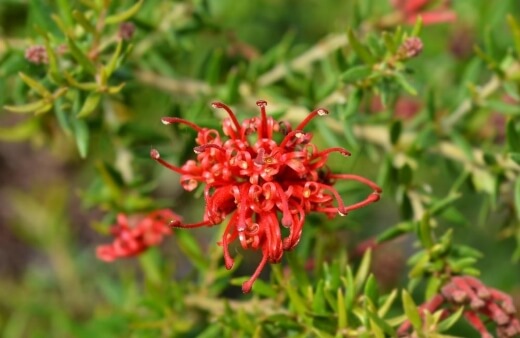
Adaptable and easy to grow, you can grow your Grevillea ‘Seaspray’ almost anywhere. However, if you’re not sure where to start, here are a few great tips to get you started:
- Grow your Grevillea ‘Seaspray’ alongside other pure, evergreen plants. The grey-green foliage of the seaspray can compliment it beautifully.
- As they’re happy to grow in loose soils, think about planting as part of a rock garden or on rocky slopes.
- Grevillea ‘Seaspray’ can also be grown as a low-growing, beautifully flowering hedge. While their growth is not overly dense, they’re great to border patios, flowerbeds, and even pools.
Are you thinking of adding some other grevilleas to your garden landscape? Here is our main Grevillea guide.
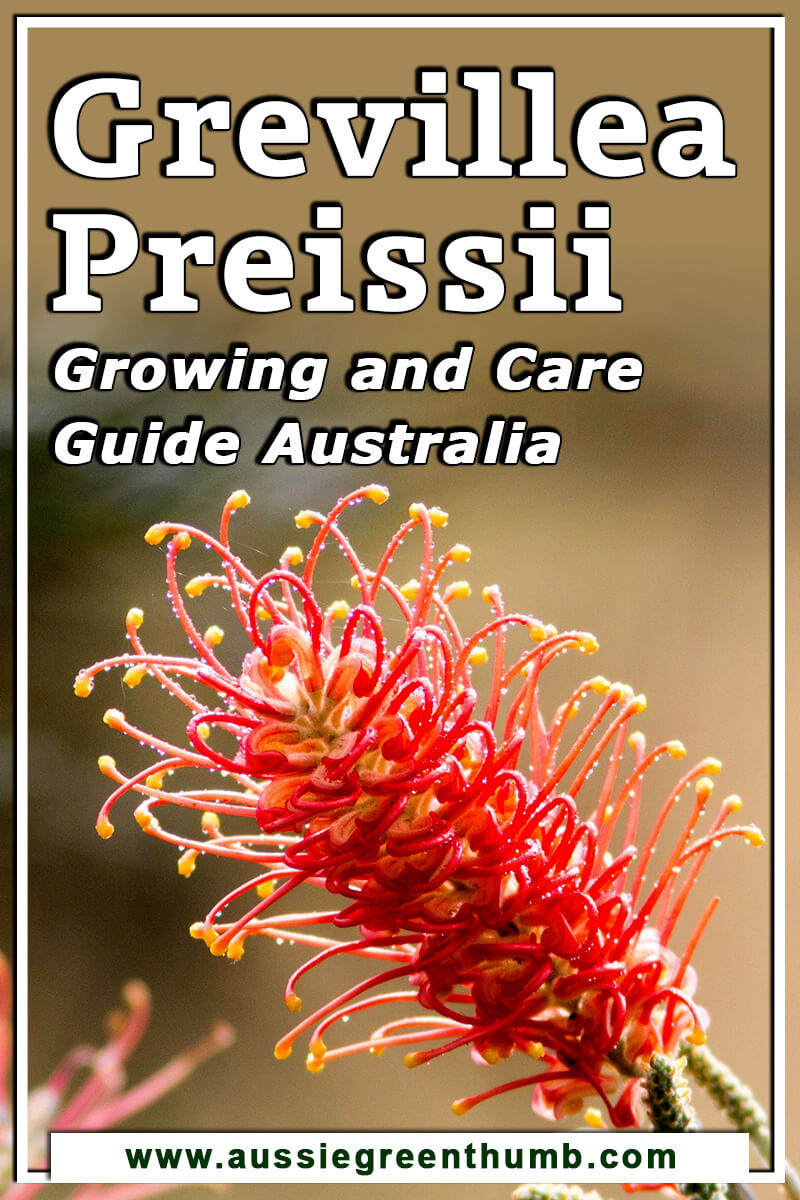
Now You Know How to Grow Grevillea ‘Seaspray’ in Your Garden
Growing Grevillea ‘Seaspray’ is a relatively simple task in most gardens. The spreading native plant will thrive with lots of sun when planted in well-draining soil. It has low water requirements and is easy to maintain. Semi-regular tip pruning will keep the shrub in shape.
If needed, an annual feed of slow-release native fertiliser should keep the plant healthy and happy. This hardy Grevillea will produce a stunning display of flowers during winter and spring and makes a great choice for gardeners looking for an attractive native ground cover.
If you have any questions about how to grow Grevillea ‘Seaspray’, reach out and let us know.
Published on January 15, 2022 by Nathan Schwartz
Last Updated on February 26, 2024

